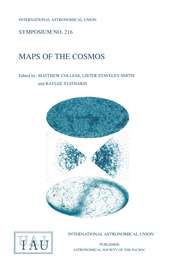No CrossRef data available.
Article contents
A Hydrodynamic Calculation of Gas Flow in a Cataclysmic Variable Star∗
Published online by Cambridge University Press: 14 August 2015
Abstract
A numerical simulation of mass transfer in a semi-detached binary star, modeled to resemble the dwarf nova Z Cam, indicates that the basic flow pattern rapidly (in less than an orbital period) assumes a stream-ring configuration. The effect producing the ring is radiative energy dissipation in a shock front which initially forms between gas in the stream from the Lagrangian point (L1) and gas farther upstream which, having already circuited the white dwarf, returns to collide with the L1 stream. The accumulating shocked gas settles into a circular orbit at a radius appropriate to its angular momentum. The ring is soon massive enough (and the Keplerian radius is large enough) to obstruct the stream from L1, so that the shock becomes concentrated at the intersection of stream and ring. This shock front can be identified with the hot spot observed in cataclysmic variable stars. Similar rapid ring formation can be expected in any binary in which the mass transfer is through L1 at low velocity, and the star receiving mass is small enough to avoid collision with the stream from L1.
- Type
- Research Article
- Information
- Copyright
- Copyright © Reidel 1976


